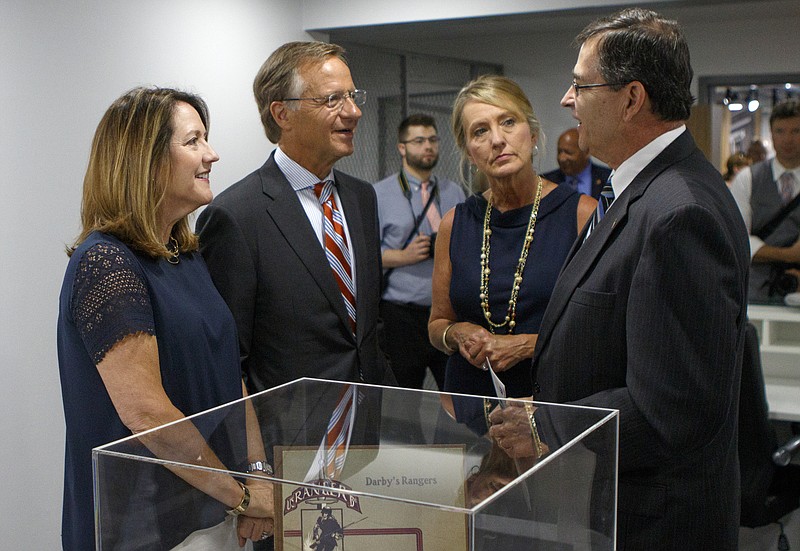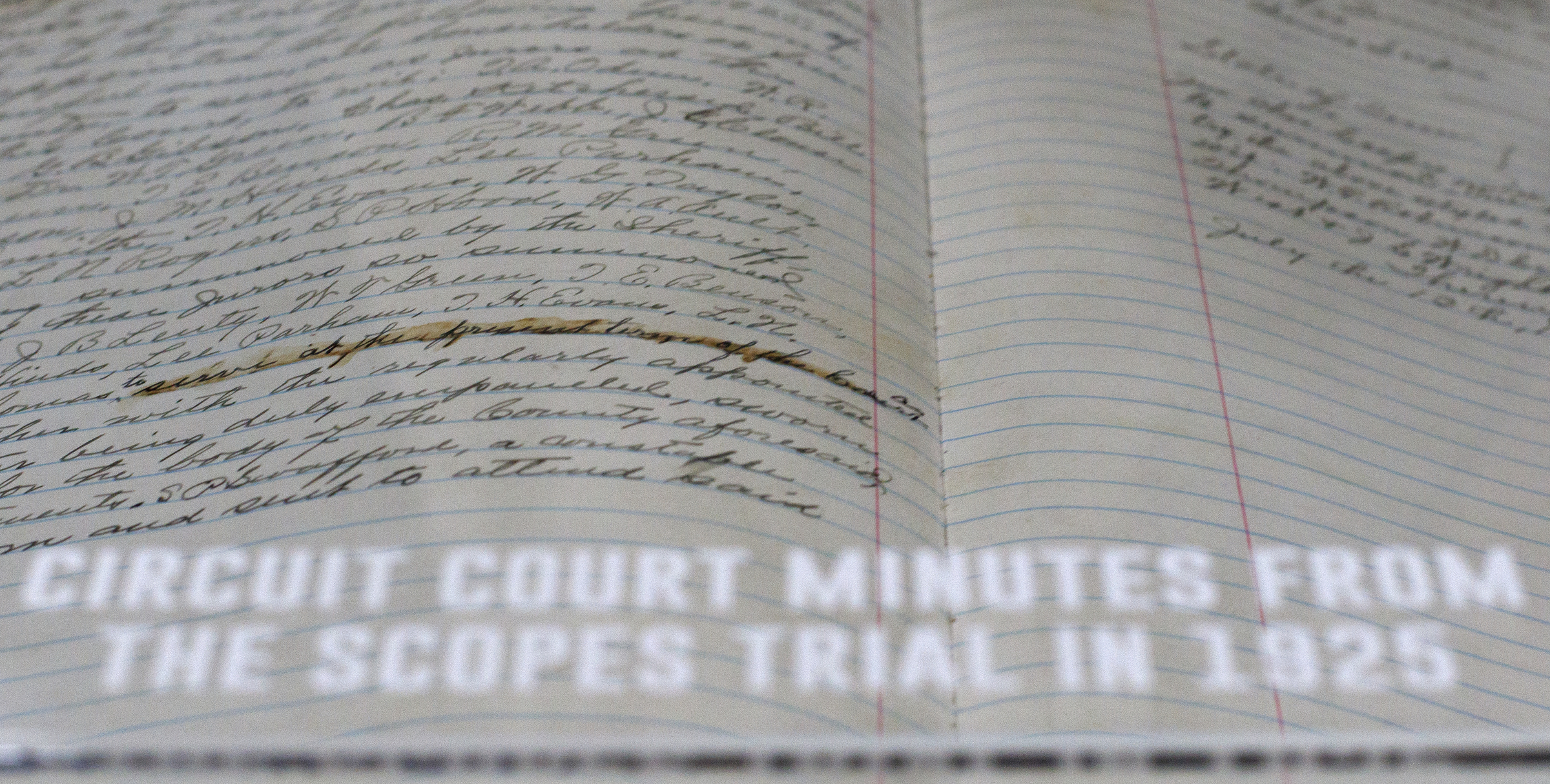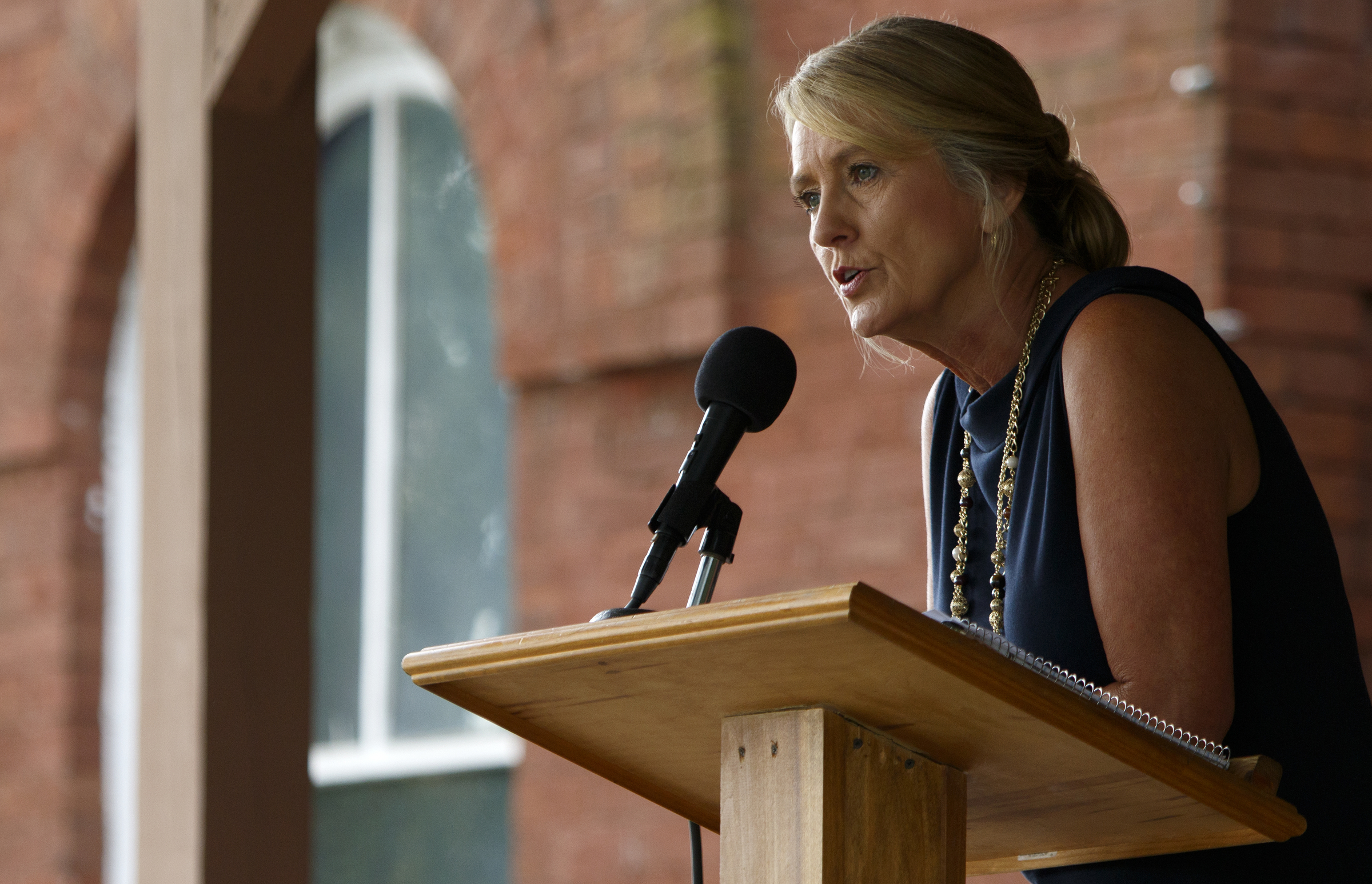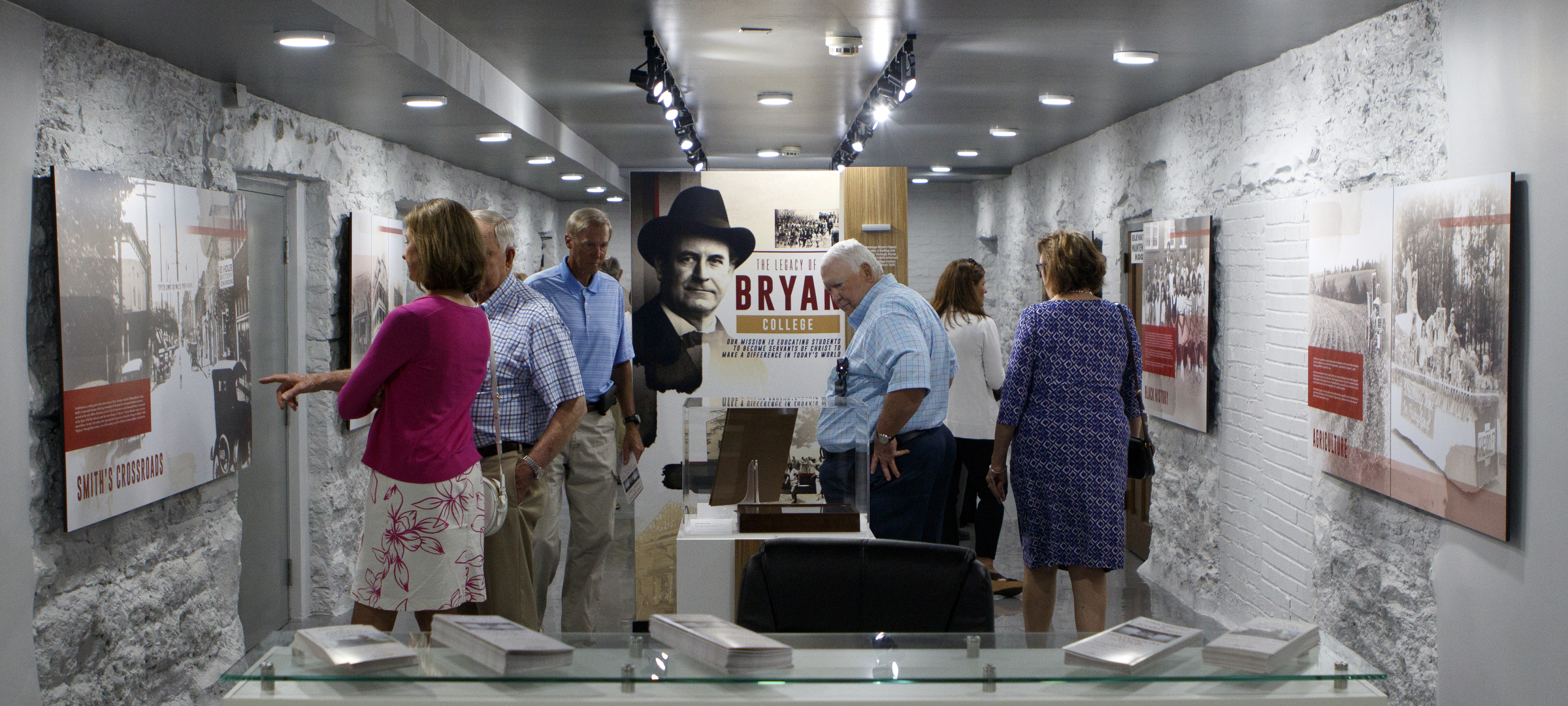DAYTON, Tenn. - The significance and history of the Rhea County Courthouse and the famous 1925 Scopes Monkey Trial is told better than ever after the opening Monday of the revamped Rhea Heritage and Scopes Trial Museum.
"I'm really impressed by the museum," Tennessee Gov. Bill Haslam said after a tour of the completely renovated museum housed in the basement of the famous courthouse.
Haslam told a crowd gathered on the courthouse lawn that, as a history major and a lover of history, he truly appreciates what the museum represents for the county.
"It does a great job of telling the story and setting the story in the context of the time," Haslam said, noting local preservation efforts over the years to preserve the courtroom where the famous trial took place 93 years ago.
"This [museum] does a great job, once you've seen [the courtroom], of telling not just about the event [and] why it happened but the context and what came before the trial," he said. The courthouse and museum showcase those events.
On Haslam's campaign visit to Dayton en route to becoming governor, he said, he thought, "This is really cool. I hope somebody cares enough to take care of it for the long term."
The governor said he was unaware of the resolve of his fellow history lovers in Dayton.
"We don't get to choose where history happens," Haslam said. "Nobody thought back in 1925, 'Hey, I know. Let's go make this history-making trial in Rhea County.' But here is where it happened."
That history has been preserved now for generations ahead, he said.
"It's a story of the whole area, of Bryan College, of African-American history and the Trail of Tears," he said. "And this museum and this courthouse will continue to tell the story.
"I like to tell people all the time that in Tennessee we make things," he said, listing a few of Tennessee's more famous products. "Maybe the most important thing we do is make history."
In the sweltering July heat in 1925, the Rhea County Courthouse was the stage for the 11-day-long trial of Dayton High School teacher John T. Scopes, who was charged with violating state law by teaching that human beings evolved from a "lower order of animals."
Scopes was convicted and fined $100, but the decision was reversed in 1927 by the Tennessee Supreme Court because the judge and not the jury set Scopes' fine. The Butler Act, the act at issue in the trial, stood until 1967 when it was repealed by Tennessee lawmakers. The case raised debate on issues such as separation of church and state, academic freedom and the relationship between science and religion.
The famous case is played out annually at the Scopes Trial Play and Festival, an event that features local actors.
In 1977, the National Park Service named the courthouse a national historic landmark. That is a rarer designation than being listed on the National Register of Historic Places, which the courthouse has been on since 1972.
The trial and its issues have been a lightning rod as recently as last year when a statue of defense attorney Clarence Darrow was installed on the courthouse lawn.
The July 14, 2017, installation of the new Darrow statue opposite the one of prosecutor William Jennings Bryan installed in 2005 drew fire from a county commissioner and a local activist. The dedication of the statue drew no protesters but there were plenty of supporters on hand the day of the unveiling.
The 7-foot-tall statue of Darrow by Pennsylvania sculptor Zenos Frudakis was two years in the making.
On Monday, "Clarence Darrow" and "William Jennings Bryan," played by two men who participate in the trial's re-enactment, welcomed attendees of the opening and introduced themselves before they offered a quick review of the trial and its history.
Laura Travis, a member of the group that spearheaded and fundraised for the 18-month-long improvement project, in her opening remarks thanked the city council and MainStreet Dayton for funding the project, and city and county elected officials, the Rhea County Historical Society, Tennessee State Historian Dr. Carroll Van West, Bryan College and several state agencies and institutions that played parts in renovations and design.
The idea was to create a museum "that would sustain itself. Not just to have one day of celebration, but to create a platform for tourism to increase and grow for an economic driver for years to come," said Travis, spouse of Rep. Ron Travis, who also spoke at the opening and noted a grant to fund a new roof for the courthouse.
MainStreet Dayton received a grant that funded $200,000 for the work, she said of her group's effort. "We had a goal of raising $50,000; we raised $140,000."
Inside, the museum features sleek exhibits with large photos of the players in the trial and other elements of the past life of Dayton. Artifacts from early in the last century are encased in glass cubes with discreet overhead lighting. The nearly-100-year old floor glistens with a fresh solid gray surface.
"History is not a battlefield," Van West said. "History is where we as a community come together, we share our stories, we share our dreams, we look into the past and take the best lessons that we can from there then we build a better future."
Bryan College president Stephen D. Livesay said Monday he was "proud of what our community has done. Bryan College would not exist if not for the Scopes Trial."
Contact staff writer Ben Benton at bbenton@timesfreepress.com or 423-757-6569. Follow him on Twitter @BenBenton or at www.facebook.com/benbenton1.



